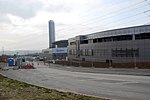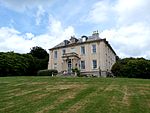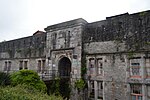Sparkwell

Sparkwell is a small village and civil parish in the South Hams district of Devon. Historically it was part of Haytor Hundred.Its local Anglican church is All Saints Church, Sparkwell. Its local non-conformist church is Lee Mill Congregational Church, which is affiliated to the EFCC.It is home to an erstwhile one-Michelin-star pub and restaurant, the Treby Arms, previously run by MasterChef: The Professionals winner Anton Piotrowski.Dartmoor Zoological Park is located on the outskirts of the village. The true story of Benjamin Mee's acquisition of the zoo inspired his book We Bought a Zoo, which was later adapted into a film starring Matt Damon. The Hemerdon Mine is located in the parish.
Excerpt from the Wikipedia article Sparkwell (License: CC BY-SA 3.0, Authors, Images).Sparkwell
South Hams Langage Industrial Estate
Geographical coordinates (GPS) Address Nearby Places Show on map
Geographical coordinates (GPS)
| Latitude | Longitude |
|---|---|
| N 50.402777777778 ° | E -3.9994444444444 ° |
Address
PL7 5DL South Hams, Langage Industrial Estate
England, United Kingdom
Open on Google Maps








